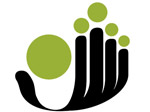Cultural Awareness
Objectives
To create an awareness and understanding of different living conditions
To make others around us more aware of different cultures
Subjects
Languare arts, visual arts, economics, geography
Nature
Cognitive, creatrive, reflective
Rationale:
The photographs presented in the book give the reader a realistic impression of the circumstances these families must deal with everyday. Some families are more fortunate than others so for them “survival” is not a constant struggle. The study of the photographs will give rise to a discussion of different living conditions.
Method:
The educator will choose ten different families from the book and use the photographs from the stories for a discussion about the following:
- Dress – What does this tell you about the climate? … about their economic status?
- Fuel – What fuel is used for cooking? Does it come from their surrounding environment? If so, is the supply limited or unlimited?
It will be important for the educator to guide the discussion and act as the “devil’s advocate” and, when needed, to encourage the group to think more deeply about the topics.
Following the discussion, the participants will choose one on the above topics and make an “awareness poster” or “awareness ad”. For example, a poster illustrating dress could depict Felipa, from Bolivia, wearing an alpaca wool shawl.
Note: The posters or ads need not always depict impoverished people. They could portray the type of dress from a particular country or a method of cooking. The objective is to increase people’s awareness and understanding of different cultures and living conditions.
Posters and ads can be displayed in community centres, churches and/or recreation centres if permission is granted.
Materials:
Text: Families of the World
Art supplies for posters and ads
Follow-up:
Display of these posters and ads can be part of an international awareness week.
